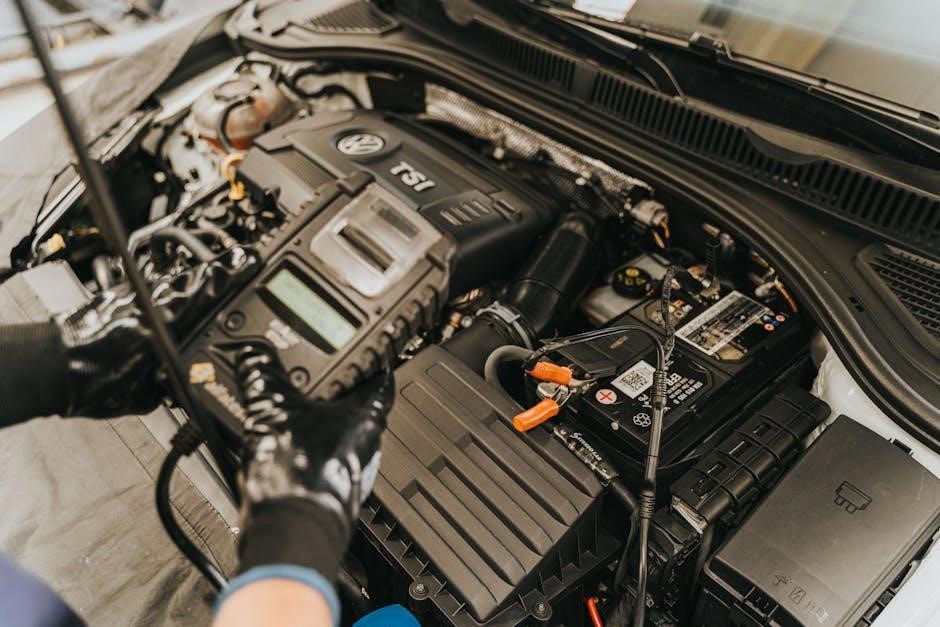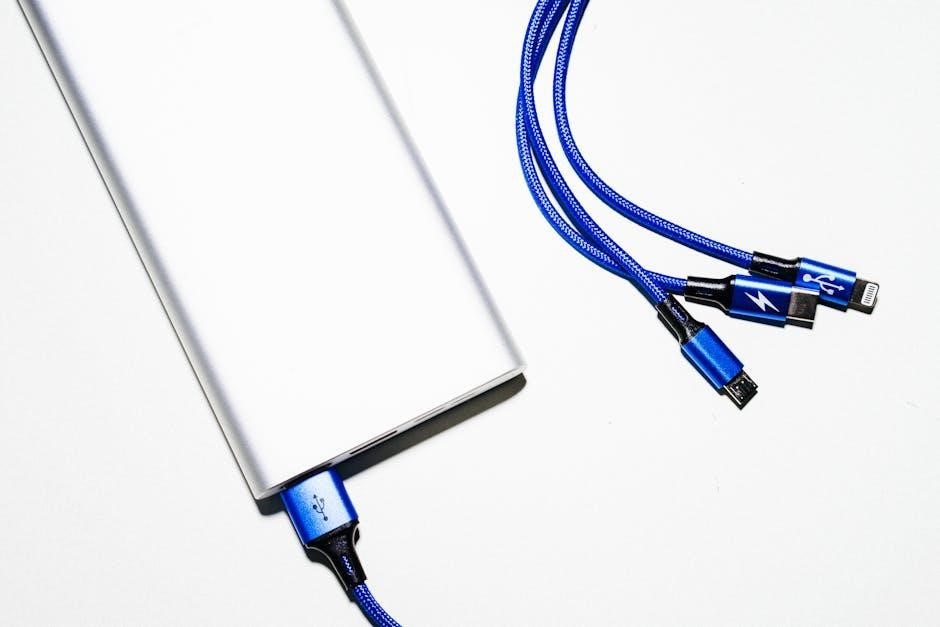The Schumacher 2 10 50 Amp Battery Charger Manual provides guidance on using the charger safely and effectively, with clear instructions and warnings to prevent damage or injury always.
Understanding the Charger’s Interface
The charger’s interface is composed of various components, including a selector switch, a needle, and a series of colored triangles and scales. The bottom row of numbers indicates the flow of amps between the charger and the battery. The needle shows the current draw, which is essential for monitoring the charging process. The charger’s interface also features a charge row, which displays the battery’s charge level, ranging from 0 to 100 percent. The colored triangles and scales provide additional information, such as the charge rate and potential issues with the battery. By understanding the charger’s interface, users can effectively monitor and control the charging process, ensuring safe and efficient battery charging. The interface is designed to be user-friendly, allowing users to easily navigate and adjust the charger’s settings as needed. This is crucial for optimal battery performance and longevity.

Key Components of the Charger
The Importance of Amps in Battery Charging
The amps in battery charging play a crucial role in determining the charging rate and overall health of the battery. According to the manual, the Schumacher 2 10 50 Amp Battery Charger allows users to select from different amp settings, including 2, 10, and 50 amps. The importance of amps lies in their ability to control the flow of energy into the battery, with higher amp settings resulting in faster charging times. However, it is essential to note that higher amp settings can also lead to increased heat generation and potential damage to the battery. The manual emphasizes the need to choose the correct amp setting based on the type and size of the battery being charged. By understanding the importance of amps in battery charging, users can optimize their charging routine and extend the lifespan of their batteries. Proper amp selection is critical.
Charging Modes and Rates
The charger offers multiple modes and rates, including 2, 10, and 50 amps, for efficient battery charging always using correct settings.
Interpreting the Charger’s Readings and Indicators
The charger’s readings and indicators are crucial for understanding the charging process, with the needle on the amp scale showing the current draw, and the colored sections indicating the charge rate, and the charger’s status, such as fully charged or fault conditions, can be determined by the position of the needle and the colors, and it is essential to monitor these readings to ensure safe and effective charging, and the charger’s manual provides detailed explanations of the readings and indicators, and how to interpret them, and by following these guidelines, users can maximize the charger’s performance and extend the life of their batteries, and the charger’s readings and indicators are designed to be easy to understand, and provide valuable information about the charging process.

Best Practices for Charging Batteries
Charging batteries at low amps, like 2 amps, is recommended for safety and longevity always using the Schumacher charger.
Consequences of Rapid Charging and Overheating
Rapid charging can cause batteries to overheat, leading to a reduction in their lifespan and potentially causing damage to the charger and surrounding equipment. The Schumacher 2 10 50 Amp Battery Charger Manual warns against rapid charging, recommending instead that users charge their batteries at the lowest possible amps to minimize heat buildup and prevent damage. Overheating can also cause the battery acid to degrade, reducing the battery’s overall performance and capacity. Furthermore, rapid charging can lead to a condition known as ” thermal runaway”, where the battery’s internal temperature increases exponentially, causing a catastrophic failure. It is essential to follow the recommended charging procedures outlined in the manual to avoid these consequences and ensure safe and effective battery charging. By doing so, users can help extend the life of their batteries and prevent costly repairs or replacements. Proper charging techniques are crucial.

Troubleshooting Common Issues with the Charger
Troubleshooting involves checking connections and settings to resolve charger issues quickly and safely always using the manual.
Final Considerations for Safe and Effective Battery Charging
To ensure safe and effective battery charging, it is essential to follow the guidelines outlined in the manual and take necessary precautions to prevent damage or injury. The Schumacher 2 10 50 Amp Battery Charger Manual provides valuable information on how to charge batteries safely and efficiently. By understanding the charger’s interface and key components, users can optimize their charging experience and prolong the life of their batteries. Additionally, being aware of the importance of amps in battery charging and the consequences of rapid charging and overheating can help users make informed decisions. By considering these factors and following the manufacturer’s instructions, users can enjoy safe and effective battery charging with their Schumacher charger. Proper charging techniques and maintenance can also help extend the lifespan of the charger and the batteries being charged. Regularly checking the charger and batteries for signs of wear and damage is also crucial.

